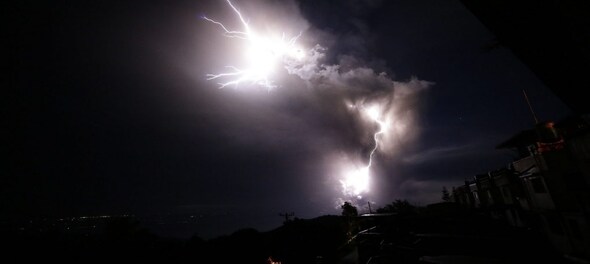
Over 60 people lost their lives in India after being struck by lightning recently. As incessant downpour came down onto the Northern plains, it brought along with it frequent lightning. As the world continues to grow warmer, instances of lightning strikes are only expected to increase.
India recorded 1.85 crore lightning strikes from April 2020 to March 2021. It was 34 percent more lightning strikes than the count in the same period in 2019-2020.
The Earth Networks India Lightning Report, 2019, estimated that lightning strikes killed more people than cyclones in India. The report also found that of the 71 percent lightning-related deaths, 25 percent were due to direct hits.
What causes lightning strikes?
Lightning strikes are caused when there are electrical imbalances between the clouds and the ground.
These imbalances are often caused when water molecules travel, in the form of rain or storm, further distribute electrical charges through rapid collision.
About 100 lightning bolts strike the Earth every second, each carrying with it millions of volts of energy. This energy is often dissipated in the form of heat, with lightning strikes reaching temperatures as high as the surface of the Sun.
Cause for concern
Recent studies have predicted that the number of lightning strikes will continue to increase directly as a result of global warming. The number of lightning strikes in India itself is expected to increase by at least 10-25 percent. Coastal areas are expected to be at the highest risk as a result.
Even a 1°C rise in global temperature would cause lightning strikes to be 12 percent more frequent.
An overheated surface and the availability of moisture favour local convective activities, triggering lightning, the Lightning Resilient Campaign India convener Sanjay Kumar Srivastava told Indian Express.
Due to global warming, an increase in the events of lightning could be either associated with an increase in heated surface areas, increase in moisture levels or both, he said.
Areas with these conditions are witnessing a rise in lightning strikes.
According to the Earth Networks India Lightning Report, in 2019, India reported a total of 2,876 lightning deaths, an increase of more than 500 in the previous year. Bihar, Madhya Pradesh, Jharkhand and Uttar Pradesh were the worst hit with a total of 1,445 deaths.
Additional risks
Lightning isn't just dangerous through its direct actions. The increased lightning activity also increases the chances of other disasters like cloud bursts and forest fires. These events can cause a cavalcade of additional destruction of property and loss of life.



